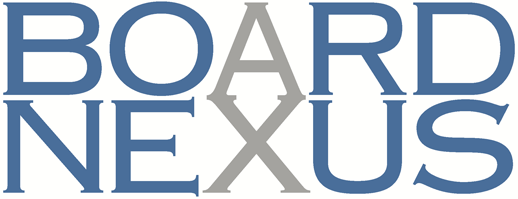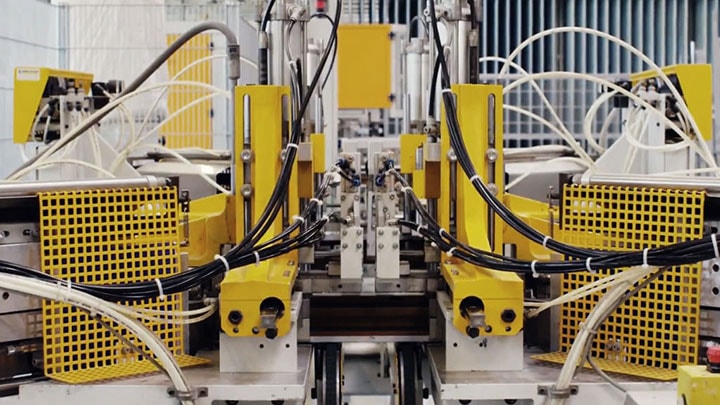A clear ambition from the board and group management – and a decentralized, iterative digital transformation process. That has been the success formula for the industrial polymer group Trelleborg.
Swedish Trelleborg is a world leader in engineered polymer solutions, with 50 sites across the globe. The engineering group is active from space to seabed and within a wide range of industries such as transportation, aerospace, agriculture, building and construction and marine infrastructure. The group has a niche strategy, where Trelleborg takes leading positions in selected segments.
How do you take such diverse businesses through a digital transformation process? Patrik Romberg, Senior Vice President of Group Communications at Trelleborg, has the answer:
“The starting point for us is to drive customer value contribution by creating ease of doing business and business acceleration. Digital becomes a key vehicle in achieving this. Our approach is two folded: to provide central framing, coordination and take decision regarding cross group investment to enable cross group scalability. At the same time, we build on our decentralized business DNA making sure that our operating units close to markets and customers create customer specific solutions. We want to secure that digital becomes a natural and integrated part of how we drive business and create value.”
Patrik Romberg has worked in Trelleborg for 15 years and has been part of leading the digital transformation for nearly eight years. Trelleborg has opted not to hire a dedicated CDO, as they think that the digital work cannot be separated from the business, but rather must become integrated. As SVP of Group Communication, Patrik Romberg has been pushing the digitalization forward, coordinating and supporting the operating units.
“The central organization’s role in digital transformation is to help with resources and investments. But the work should be done in the operating units. Our digital process must match our niche strategy, and creating value is done best in the local environments.”
Working in close cooperation with customers has been vital for the digital success. Challenges are identified and solutions are developed together with customers. As the operating units are closelo to the customers, they can pick up signs and needs faster than the central organization.
Digital as an enabler
Technology has always been regarded as an enabler in Trelleborg – and digital technology is no exception. The digital transformation has been going on for nearly ten years. Two guiding stars have been vital: One is that the digital development should either accelerate customers’ business, or ease doing business with Trelleborg.
“Accelerating business can mean adding value by helping the clients work more efficiently, cut their time-to-market or be able to offer new value to the market”, Patrik Romberg explains.
Because of the variation of business in the different industries, scaling up solutions across the Trelleborg group is not easily done. When one operating unit finds a solution, that solution needs to be adjusted and tailored before it’s applied elsewhere in the business group.
“If possible, we scale solutions on other markets in a way that’s applicable there”, Patrik Romberg says.
The role of the board
What, then, is the role of the board in a decentralized digitalisation process? Patrik Romberg asserts that the board has played an important part in the digital transformation. The board has ensured that digital has been prioritized.
“The board has created support and pushed us forward, keeping digitalization on the agenda all along. They have ensured that digitalization is regarded as a means of refining the business. Board members have also been available for discussion and given their opinion on whether a solution seems reasonable or not. When necessary, the board has approved investments.”
The board has been given regular updates and at times, the board has kept a close dialogue with CEO Peter Nilsson, the group management and other key business leaders in the organization. “Sometimes it’s even more important that the managers from our operating units participate and present to the board what they are doing digitally.”
In turn, the board regularly visits the operating units, to learn what’s happening in the organization. The support of the board has been vital for the digital development, Romberg claims.“If the board doesn’t believe in digitalization, the process won’t get the attention or prioritization required. They have to put digitalization on the agenda.”
Iteration important for success
The key processes for pushing digitalization in the Trelleborg group is called DCI, or Digital Customer Initiatives. The DCI process has been run throughout the entire group – by inspirational seminars and workshops that have helped the operating units define and prioritize where to focus their efforts.
A range of different areas have been covered: marketing and communication, smart products, services and tools, and new business models. Everything that can be digitalized should be digitalized, is the motto.
“We have packaged it this way to make it easier to understand where to put focus, and where future lies.” The key to success is that the DCI has not been a one time process, but a repeating cycle. “To make it an integrated part of the business, we need to iterate”, Patrik Romberg says.
By now, the DCI process has been going on for four years. It has recently moved into a new stage, the DCI 2.0. The new version is meant to put even more clarity and fuel into the process, Patrik Romberg explains.
“When you do things for the first time, there’s a lot of exploration. In the next phase, you’ve learnt a lot and seen what has led to success. Now, in this second wave we prioritize and sharpen the process further and ask ourselves, is this strategically right? Does it create value for us and the customer? How do we prioritize and add the resources required to take it to the next step?”
Patrik Romberg sees three keys to success in the DCI process:
- Ownership is in the operating units. The operating units are closest to the markets and the customers. Hence, they have been given ownership of the digital development since the beginning, and the role of the central organization is to give support.
- Clear direction from the board and CEO. The message from the top has been clear – digitalization is important and prioritized.
- Trial and error is allowed, but always together with clients. “When you test things together with your clients, that’s when you discover if something is important or not”, Romberg says.
Generous testing and allowing failure have helped Trelleborg identify areas that are not as important as anticipated. And of course, it has helped identifying areas that are important and will continue to be prioritized.
“Whether something is important or not should be measured in relation to the customers and the market. Is there a demand for this, today or in the future? We can’t just make things up that we think will fly. That’s not how things work in our industries.”
Another, just as important success factor, has been the ongoing iterative process. Endurance is only possible if you’re passionate, Romberg concludes. “You need to believe in it and have the energy to push forward and press on. If you don’t have that, it’s difficult to do these cycles over and over again. This is true on all levels of the business – not the least for the board.”
Moving forward by repetition
Nearly eight years into their digital journey, Trelleborg has come far. But what’s the next step? For the DCI, the next step is to make the process even more embedded into key business processes and customer solutions.
“It’s one thing to do it once. But you need to have the energy to do it twice, thrice, fourfold. In some parts of the Trelleborg group, using digital to help our customers is already a natural part of doing business. In other parts, we still have a way to go.”
Repetition may sound boring, but for Patrik Romberg it’s quite the opposite. “In a company of our size, you don’t just do the journey once and get done with it. You have to keep returning to it, again and again, with new people, new structures, driving for excellence and always raising the bar. And that’s what makes it exciting.”

